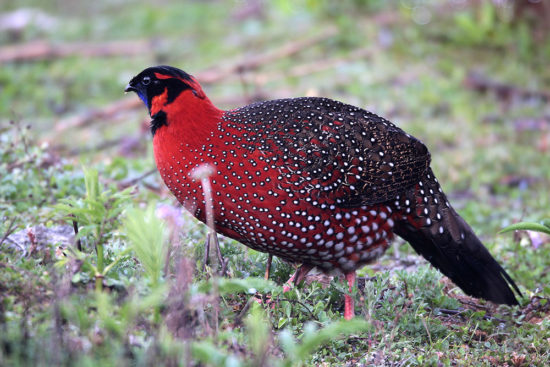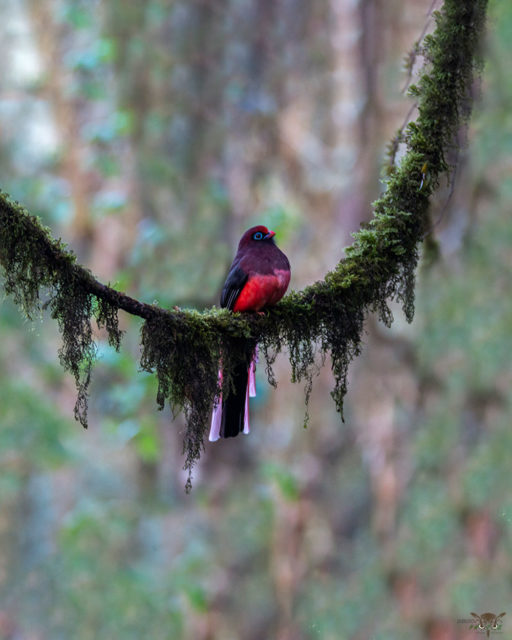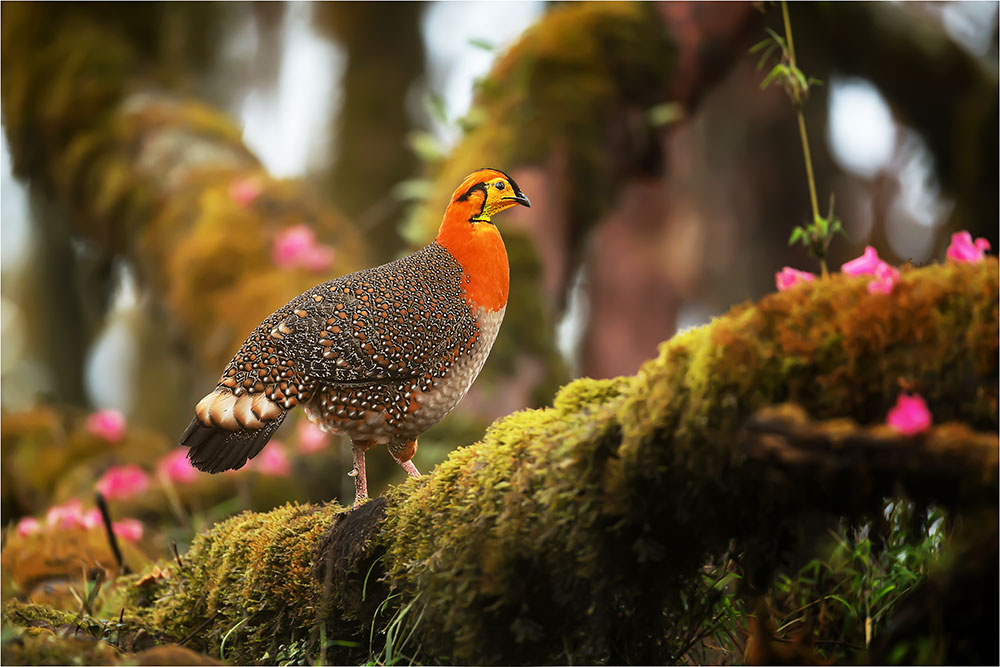The world birding community considers Bhutan as one of the prime birding destinations in the world.
The Guinness Book of World Records 2012 features an extremely rare bird photographed in Bhutan – that of the White-bellied Heron (Ardea insignis). It is listed as the rarest of the Heron species. The bird, whose global population is estimated between 50 to 200 individuals, is so rare that Professor Peter Frederic PhD, a world-renowned heron expert at the University of Florida, USA had never seen it before, until his coming to Bhutan in 2006. Since then, for a number of years, he visited Bhutan every year and has greatly contributed to the study of the bird’s biology and ecology, spear-headed by the Royal Society for the Protection of Nature (RSPN), few years back.
Although the presence of this bird is reported in a number of other countries such as Burma, China and India, Bhutan is the only country where it can be seen without much difficulty. As of this year, 21 individuals have been enumerated in Bhutan. Most significantly, Bhutan is the only country where the birds can be sighted easily – along the Punakha Phochu/Mochu Rivers and around the Berti/Mangdechu areas in Zhemgang. It is for this reason that American diplomat and one of the world’s top birders – Mr. Peter G. Kaestner (ranked #3 in the world at 9,685 bird species sighted as of July 2022), choose to come to Bhutan, in April, 2009, to sight two of his life birds – the White-bellied Heron (Ardea insignis) and the Fulvous Parrotbill (Paradoxornis fulvifrons).

Satyr Tragopan (Photo: Yeshey Dorji )

Ward’s Trogon Photo: (Chencho Wangdi)
Among Bhutan’s famous birds are the Satyr Tragopan (Tragopan satyra), which ranks as the 10th most colorful bird in the world.
Another bird that is the delight of most of the birders who visit Bhutan is the unusually Ibisbill (Ibidorhyncha struthersii) – ranked as the 21st most beautiful bird of the world.
The world birding community considers Bhutan as one of the prime birding destinations in the world. Besides the White-bellied Herons, Bhutan is home to a large number of other globally endangered bird species, such as the Ward’s Trogon (Harpactes wardi), Beautiful Nuthatch (Sitta formosa), Rufous-necked Hornbill (Buceros hydrocorax), Pallas’s Fish Eagle (Haliaeetus leucoryphus), Blyth’s Tragopan (Tragopan blythii), Chestnut-breasted Partridge (Arborophila mandellii), Himalayan Monal (Lophophorus impejanus), Wood Snipe (Gallinago nemoricola) etc., to name a few.
The diversity of Bhutan’s avifauna is stunning. At 783 bird species as of 2022, Bhutan is home to approximately 7% of total global bird species. The country’s wide altitudinal range produces suitable climactic conditions that help support Bhutan’s enviable biodiversity. However, its conservation is the result of the progressive environmental policies of Bhutan’s successive monarchs and the people who, being mainly Buddhists, revere and respect all natural elements. Bhutan is perhaps the only country in the world that has made a constitutional commitment to maintain a forest cover of 60% for all times. It is no wonder then that Bhutan has been the recipient of prestigious international awards such as the UNEP’s Champion of the Earth Award as well as the coveted J. Paul Getty Conservation Award. More recently, His Majesty the 4th Druk Gyalpo was awarded the Blue Planet Prize for his contribution to the protection and conservation of the environment.
Bhutan has gained prominence on the world stage as the country that propounded the concept of Gross National Happiness (GNH). While it may take a while for world leaders and economists and planners to adjust to the paradigm shift, a few thousand birders around the world have been finding their Gross Personal Happiness (GPH) at a short stretch of forest in Eastern Bhutan that offers an unmatched variety of avifauna. Birders around the world have declared that short stretch of broad-leaved forest between Sengore and Yongkola in Mongar Dzongkhag as the “Birding Capital of the World.”
For some inexplicable reason the bird-rich areas of Chhukha Dzongkhag has so far been off-limits for the global bird watching community. But efforts are now underway to open up the area for birding. If this happens, Chhukha will become the next birding capital of the world simply because the diversity of birdlife in these areas is second to none. The added advantage with Chhukha is its proximity to Paro international airport – which translates into shorter duration needed to spend birding in Bhutan – a sure-shot crowd-puller for the passion-driven birdwatchers of the world.
Yeshey Dorji is a professional photographer and author of several books on birds in Bhutan. He is passionate about birdwatching, trekking, fishing and humanitarian services. He blogs at yesheydorji.blogspot.com.

This series is sponsored by Ecotourism Project “Mainstreaming Biodiversity Conservation into the Tourism Sector in Bhutan” funded by GEF-UNDP through the Tourism Council of Bhutan, RGoB.


